

| |
More SUPA research:
|
|
| |
|
|
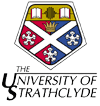 Physics
at the University of Strathclyde
Physics
at the University of Strathclyde
Research fields for the Department of Physics and the Institute of Photonics.
Quantum Optics and Nonlinear Photonics
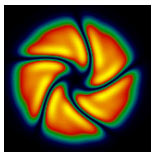 Theory
and simulations of optical systems and photonics devices focus on quantum information schemes and spatio-temporal complexity. These
activities
link with experimental work on cold atoms, Bose-Einstein condensates, atom
optics and dissipative solitons performed in the department and on optical
angular momentum done at Glasgow. The group has major expertise in high performance
computing.
Theory
and simulations of optical systems and photonics devices focus on quantum information schemes and spatio-temporal complexity. These
activities
link with experimental work on cold atoms, Bose-Einstein condensates, atom
optics and dissipative solitons performed in the department and on optical
angular momentum done at Glasgow. The group has major expertise in high performance
computing.
Ultrafast Sources and Applications
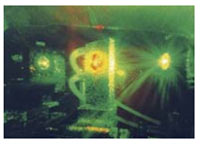 Development of novel ultrafast laser sources flourishes alongside
the implementation of powerful new diagnostic and investigative techniques
probing femtosecond
dynamics in matter. The high power femtosecond lasers of the Terahertz to
Optical Pulse Source (TOPS)
facility underpin work in laser-driven wakefield acceleration (ALPHA-X),
non-linear optics of plasmas, super-radiant amplification, free-electron
lasers and chirped pulse Raman.
Development of novel ultrafast laser sources flourishes alongside
the implementation of powerful new diagnostic and investigative techniques
probing femtosecond
dynamics in matter. The high power femtosecond lasers of the Terahertz to
Optical Pulse Source (TOPS)
facility underpin work in laser-driven wakefield acceleration (ALPHA-X),
non-linear optics of plasmas, super-radiant amplification, free-electron
lasers and chirped pulse Raman.
Novel Light Sources
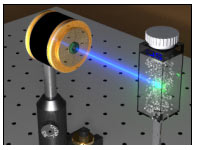 Innovative work has been ongoing for many years in the development
of semiconductor light emitters and solid
state lasers. Notable aspects include
surface emitting
lasers (VECSELS, VCSELs & polariton lasers) and III-nitride based light
sources. Advances in quantum cascade lasers are being applied to sensitive
gas detection systems and those in photonic crystal fibres being exploited
for use in novel lasers.
Innovative work has been ongoing for many years in the development
of semiconductor light emitters and solid
state lasers. Notable aspects include
surface emitting
lasers (VECSELS, VCSELs & polariton lasers) and III-nitride based light
sources. Advances in quantum cascade lasers are being applied to sensitive
gas detection systems and those in photonic crystal fibres being exploited
for use in novel lasers.
Biophotonics
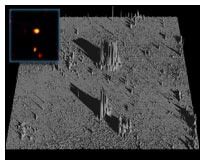 Techniques
including fluorescence lifetimes, laser-based multiphoton microscopy, near-field
microscopy, and resonance energy transfer are used
for novel research
in biophotonics. Close industrial & clinical collaborations focus on
molecular bio-systems such as proteins, cells and melanin and utilise in-vivo
sensing of important metabolites. On a larger scale, work in environmental
optics includes optical monitoring of ecological processes and remote sensing
in the marine environment.
Techniques
including fluorescence lifetimes, laser-based multiphoton microscopy, near-field
microscopy, and resonance energy transfer are used
for novel research
in biophotonics. Close industrial & clinical collaborations focus on
molecular bio-systems such as proteins, cells and melanin and utilise in-vivo
sensing of important metabolites. On a larger scale, work in environmental
optics includes optical monitoring of ecological processes and remote sensing
in the marine environment.
Nano-photonics and Structured Materials
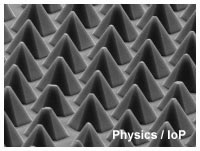 Techniques for the high resolution characterisation of advanced
materials, such as single-molecules, quantum dots, nano-structured semiconductors
and
colloids are being advanced. Major instrumentation centres are based around
fluorescence metrology and scanning electron microscopy focussing on the
properties of photonic materials.
Techniques for the high resolution characterisation of advanced
materials, such as single-molecules, quantum dots, nano-structured semiconductors
and
colloids are being advanced. Major instrumentation centres are based around
fluorescence metrology and scanning electron microscopy focussing on the
properties of photonic materials.
Relativistic Electrons, Lasers and Discharges
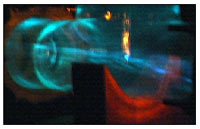 Activities
in experimental and theoretical relativistic electron beam physics, electron
cyclotron masers, cyclotron autoresonance masers (CARMs),
free electron
lasers, superradiant sources, novel electron sources, auroral kilometric
radiation experiments, pseudospark physics, plasma applications and the
physics of 4th generation light sources.
Activities
in experimental and theoretical relativistic electron beam physics, electron
cyclotron masers, cyclotron autoresonance masers (CARMs),
free electron
lasers, superradiant sources, novel electron sources, auroral kilometric
radiation experiments, pseudospark physics, plasma applications and the
physics of 4th generation light sources.
Laser Induced Nuclear Phenomena
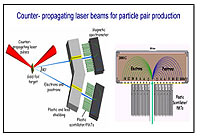 A Strathclyde/Paisley collaboration in laser driven plasma
nuclear physics has been first to create medical isotopes, heavy ion fission
and fusion,
transmutation of nuclear waste and neutron spallation using high intensity
lasers.
A Strathclyde/Paisley collaboration in laser driven plasma
nuclear physics has been first to create medical isotopes, heavy ion fission
and fusion,
transmutation of nuclear waste and neutron spallation using high intensity
lasers.
Atomic and Molecular Diagnostic Processes in Plasmas
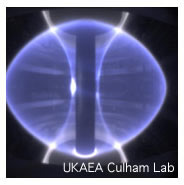 The role of atoms, ions and molecules in high temperature fusion
and stellar plasmas, such as the solar corona and low temperature discharges,
are under
investigation. Theoretical computational work focuses mainly on electron
collisions and spectral emission from plasmas and links closely to major
Earth observation, astrophysical, fusion and heavy ion ring laboratories
in Europe.
The role of atoms, ions and molecules in high temperature fusion
and stellar plasmas, such as the solar corona and low temperature discharges,
are under
investigation. Theoretical computational work focuses mainly on electron
collisions and spectral emission from plasmas and links closely to major
Earth observation, astrophysical, fusion and heavy ion ring laboratories
in Europe.
Astrobiology
The formation of biologically interesting molecules in the gas phase and on dust grain surfaces in molecular clouds and protostellar disks is being investigated using laboratory experiments.
All-Solid-State Laser Development
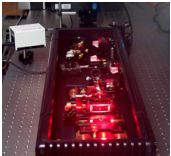 This group specialises in the science, technology and engineering
of all-solid-state light sources and works particularly with short-pulse
systems for practical
applications. This involves detailed investigation and understanding of the
laser physics, coupled with a practical approach to system engineering.
This group specialises in the science, technology and engineering
of all-solid-state light sources and works particularly with short-pulse
systems for practical
applications. This involves detailed investigation and understanding of the
laser physics, coupled with a practical approach to system engineering.
III-V Semiconductor Optoelectronic Materials & Devices
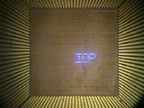 This group undertakes a broad range of activity ranging from
growth of GaN and related alloys (underpinned by an MOCVD growth reactor),
research
into
III-V materials, device design and device processing, to the development
of semiconductor lasers, and LED sources, with a particular emphasis on
surface emitting devices.
This group undertakes a broad range of activity ranging from
growth of GaN and related alloys (underpinned by an MOCVD growth reactor),
research
into
III-V materials, device design and device processing, to the development
of semiconductor lasers, and LED sources, with a particular emphasis on
surface emitting devices.
Applications
 This group concentrates on the suitability of ultra-fast lasers
and other light sources for biomedical sensing and imaging and also materials
processing. The objective is to provide complete solutions, in which
the light source
is one, often key, part.
This group concentrates on the suitability of ultra-fast lasers
and other light sources for biomedical sensing and imaging and also materials
processing. The objective is to provide complete solutions, in which
the light source
is one, often key, part.